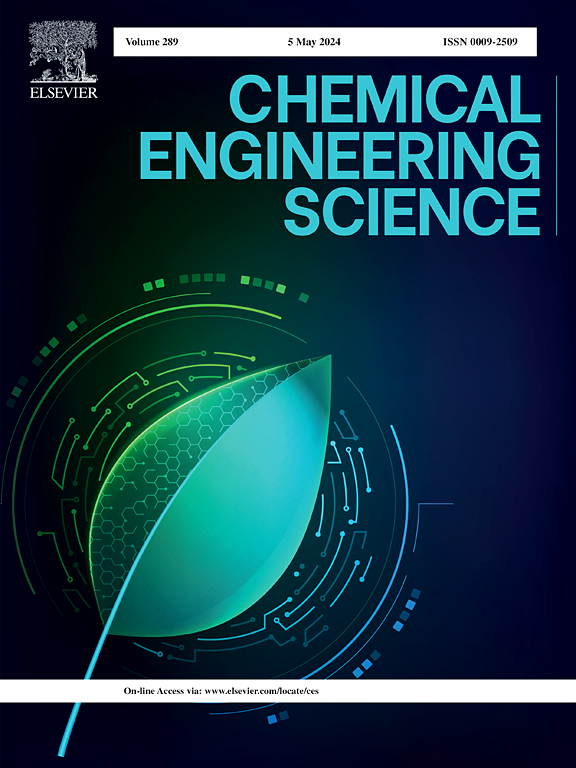创新使用环保硬脂酸改性氧化铁纳米颗粒稳定油乳化液中的水,用于腐蚀性低含水原油系统中低碳钢的防腐
IF 4.3
2区 工程技术
Q2 ENGINEERING, CHEMICAL
引用次数: 0
摘要
研究了两亲性硬脂酸修饰氧化铁纳米颗粒(SAIO)在腐蚀性原油水(W/O)体系中对低碳钢的腐蚀抑制作用。SAIO纳米颗粒将界面张力(IFT)降低了约20% %,形成了具有较小液滴的稳定W/O乳液。W/O乳液在室温下稳定90 天以上,在50 ℃下稳定3 天以上。室温条件下,最佳SAIO浓度的乳液在酸性、中性和碱性条件下均表现出稳定性。SAIO防止低碳钢腐蚀的能力与pH值有关。SAIO≥1 mg/ml时,高水接触角为140°,表明钢表面的润湿性降低,水相相互作用减少。结果表明,SAIO纳米颗粒在腐蚀性W/O介质中对钢的腐蚀抑制作用是原来的两倍。此外,当暴露在磁场中时,SAIO纳米颗粒几乎可以通过破乳从W/O体系中完全回收。研究表明,环保的SAIO纳米颗粒可以通过界面操作“锁定”W/O系统中的水相,从而防止钢腐蚀,并且可以回收和重复使用。本文章由计算机程序翻译,如有差异,请以英文原文为准。


Innovative use of eco-friendly stearate-modified iron oxide nanoparticles in stabilization of water in oil emulsion for corrosion protection of mild steel in corrosive low water cut -crude oil systems
Eco-friendly amphiphilic stearic acid-modified iron oxide (SAIO) nanoparticles were implemented to inhibit the corrosion of mild steel in a corrosive water-in-crude oil (W/O) system. The SAIO nanoparticles reduced the interfacial tension (IFT) by around 20 %, resulting in a stable W/O emulsion with smaller droplets. The W/O emulsion was stable for over 90 days at room temperature and 3 days at 50 °C. At room temperature, the emulsion with the optimum concentration of SAIO showed stability in acidic, neutral, and alkaline conditions. SAIO’s ability to prevent corrosion of mild steel was found to be pH dependent. Above 1 mg/ml SAIO, a high water contact angle of 140° indicated lower wettability and reduced water phase interaction of the steel surface. As a result, SAIO nanoparticles inhibited steel corrosion in the corrosive W/O media by a factor of two. In addition, SAIO nanoparticles could be almost entirely recovered from the W/O system via demulsification when exposed to a magnetic field. The research demonstrates that eco-friendly SAIO nanoparticles can prevent steel corrosion by “locking” the water phase in W/O systems by interfacial manipulation which are recoverable and reusable.
求助全文
通过发布文献求助,成功后即可免费获取论文全文。
去求助
来源期刊

Chemical Engineering Science
工程技术-工程:化工
CiteScore
7.50
自引率
8.50%
发文量
1025
审稿时长
50 days
期刊介绍:
Chemical engineering enables the transformation of natural resources and energy into useful products for society. It draws on and applies natural sciences, mathematics and economics, and has developed fundamental engineering science that underpins the discipline.
Chemical Engineering Science (CES) has been publishing papers on the fundamentals of chemical engineering since 1951. CES is the platform where the most significant advances in the discipline have ever since been published. Chemical Engineering Science has accompanied and sustained chemical engineering through its development into the vibrant and broad scientific discipline it is today.
 求助内容:
求助内容: 应助结果提醒方式:
应助结果提醒方式:


